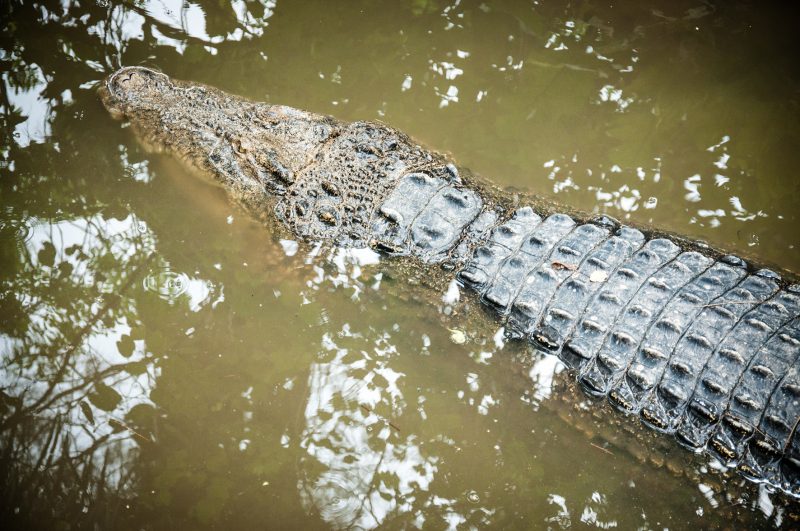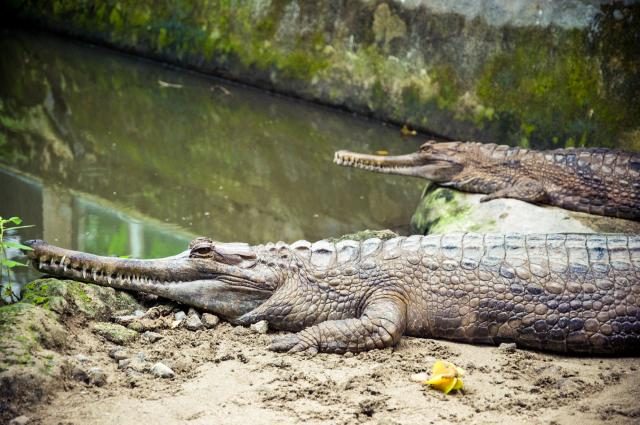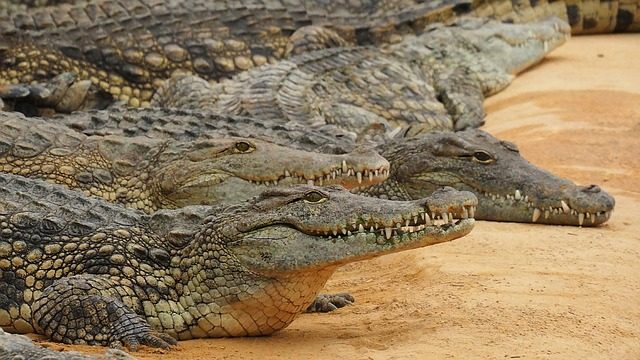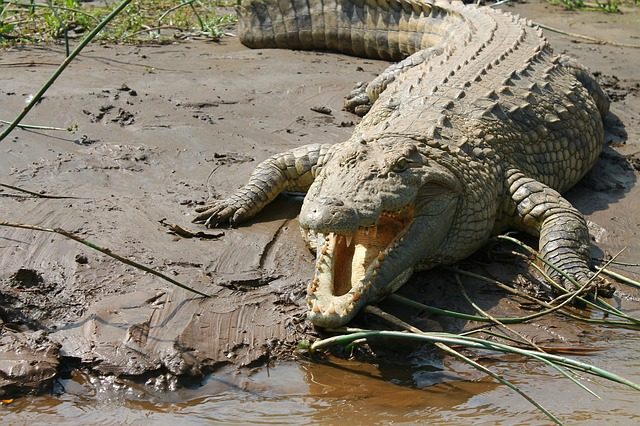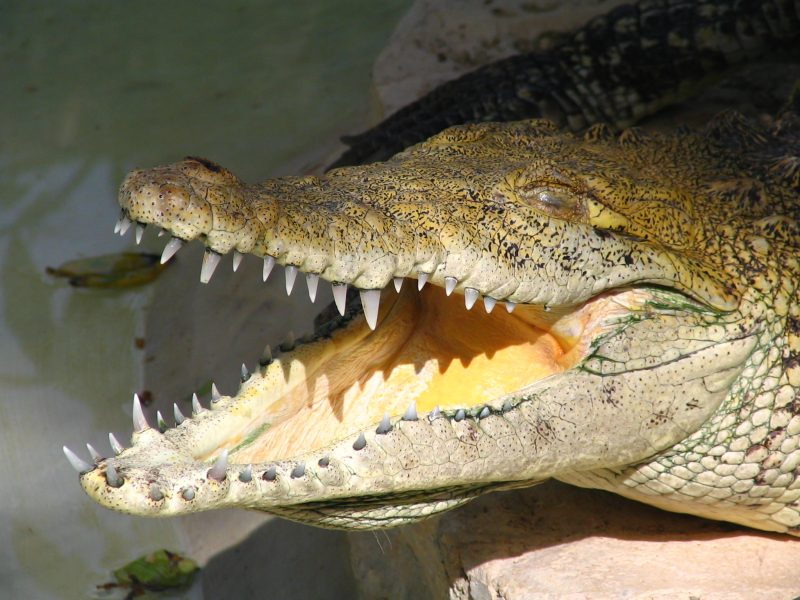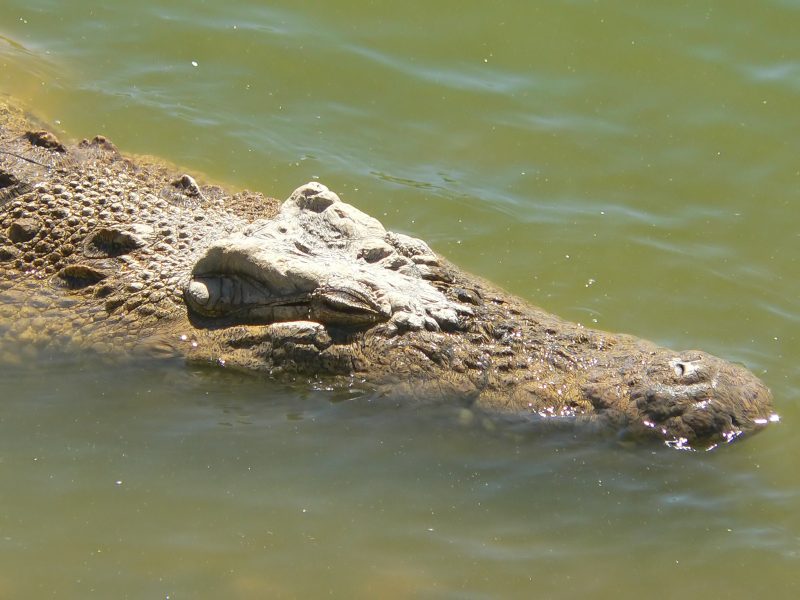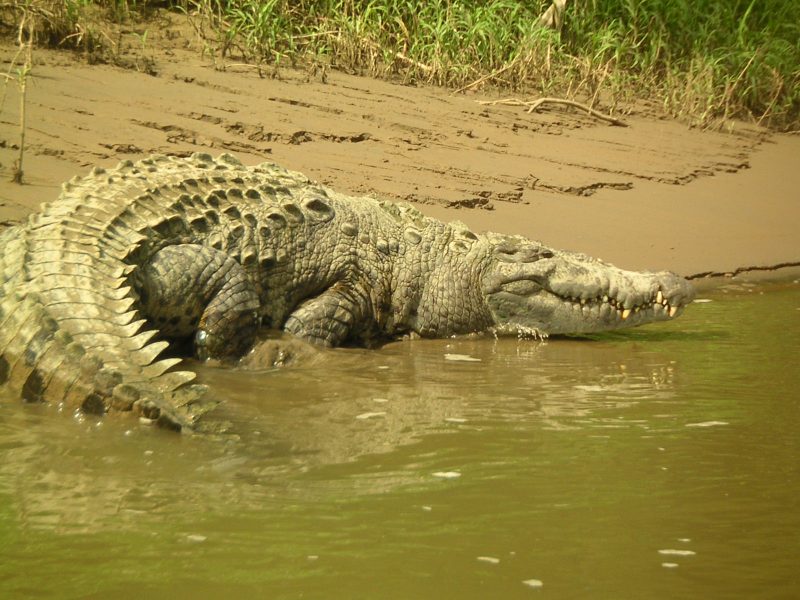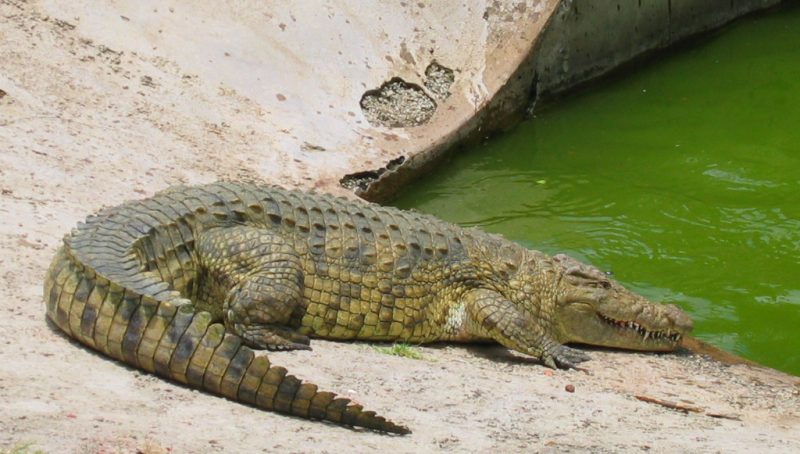Get To Know The Wild Crocodile
Nile crocodiles are prehistoric survivors of dinosaur antecedents. In their present form, they date back 80 million years. The Egyptians kept them as pets 26 centuries ago. Nubian fishers, to this day, stuff them and mount them over their door sills to ward off evil. The main features of crocodile are its four splayed, short legs, a scaly hide, a flat, powerful tail and a strong jaw. Although they are scary creatures, their group dynamism and individual behavior are often fascinating and amusing to both the biologists and the general public alike.
Length and weight
A male crocodile can weigh well over 1,650 pounds and reach a size of about 20 feet in length. But the average sizes are more in the range of 500 pounds and 16 feet. Nile crocodile reaches a typical length of 5 meters and weighs up to 410 kg. However, crocodiles measuring 6 meters in length and 900 kg in weight are not uncommon.
Communal social structure
Nile crocodiles are gregarious animals. Clusters in the water are called floats. Group size may contain up to 100 individuals and depends on the abundance of food. Sometimes they hunt cooperatively, but the largest crocs eat first. When the surface water dries up or when food resources are scarce, groups tend to break up. Individuals in groups communicate with pitched vocals. They use a range of hisses and calls. They love body contact and are often found lying over or against each other.
Natural habitat range
The Nile crocodile is the world’s second largest extant reptile after the saltwater crocodile. It is one of the three species of crocodile found in Africa. There are an estimated 450,000 crocodiles left in the wild. It is widespread throughout sub-Saharan Africa, the Nile Basin, and Madagascar and inhabits different types of aquatic environments such as large rivers, lakes, estuaries, mangrove swamps, and freshwater marshes. The range once stretched northward as far as the Nile delta. Prehistorically, they even occurred as far as Israel. They are hole-nesters with preferred nesting locations being sandy shores, river banks, and dry stream beds.
Hibernation during droughts
A crocodile may enter a hibernation during drought periods which can last for several months at a stretch. They dig a hole in a dry river bank or riverbed and retreat into it. Crocodiles in these dens can survive without food for up to two years. When searching for alternative resources, they can migrate several kilometers across dry land.
Aground or underwater
On hot days, the Nile crocodile spends much of the day ashore to bask and warm itself in the sun. They lounge with their mouths open. Both sexes gather at basking sites. But it is the males who defend the territories along shorelines. On regular days, crocodiles hide in the water to cool down, patiently waiting for its prey. It’s olive coloring aids in concealment. Also, the placement of nostrils, eyes, and ears on the top of the skull is in such a way that it can stay nearly submerged all day. Small bumps, known as integumentary sensory organs, cover their faces and bodies. These organs are more sensitive than human fingertips. They allow crocodiles to detect even the slightest movements as well as temperature and chemical variations in the water.
Puberty and maturity
In the wild, both male and female crocodiles reach sexual maturity at the age of 12. The onset of puberty in males occurs at 3 m length and 200 kg of body mass and in females at 2.5 m length and 150 kg body weight. Girls start mating as soon as they reach sexual maturity. But males only begin mating at the age of 15 and when they are 4 m long with a body mass of 400 kg.
Nest for incubation
Females tend to make their nests very close to one another. She digs a hole 50 cm deep a few meters away from the bank and lays up to 90 eggs. She covers the eggs with sand and guards them for an incubation period of three months.
Unusual caring parent
One peculiar characteristic of the fearsome Nile crocodile is its caring parenthood. Where most reptiles move on after laying eggs, Nile crocs ferociously guard them until fully hatched. They are often seen rolling the eggs in their mouths to help babies emerge. The mother protects the newborns for about ten days. She may form a crèche in the area. The juveniles grow to 1.2 m long by the time they reach two years and leave the nest area. But only 2% of them survive to live beyond 1.5 m length. After that, the mortality rate drops as the adult has few enemies besides humans.
Irregular body temperature
Crocodiles are cold-blooded creatures. Their body temperature is not constant. The core temperature is built up to 38°C by lounging in the sun during daytime. The energy thus generated is used for hunting, digesting food and social behavior. Without sufficient temperature, it cannot digest food. In an extended period of cold, the undigested, rotten food contents in the stomach become poisoned. After sunset, the temperature drops rapidly to 15°C.
Temperature determines sex
The sex of the hatchlings of the Nile crocodiles is determined not by genetics. It is temperature-dependent, which means the average temperature during the incubation period determines the sex. Offspring will be males if the temperature inside the nest is between 89.2 F and 94.2 F. Otherwise, it will be female.
Fighting for survival
The population of Nile crocodile was hunted close to extinction through the 60s for leather and meat. It was then an endangered species. But the hunting ban and conservation efforts of the international trade regulations have helped them rebound. It is now a species of lower risk. In some areas of its range, though, pollution, habitat loss, and illegal hunting have severely depleted their numbers.
5 Frequently Asked Questions About Crocodiles
To receive a colourful digibook about crocodile with videos, images and text, please fill out the following form or simply email us on safaris@safari-center.com

